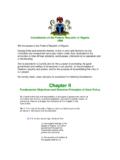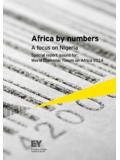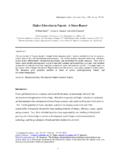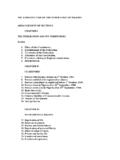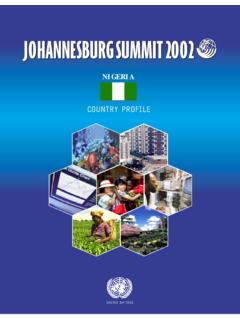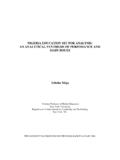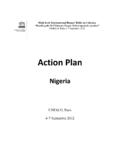Transcription of DRUG REGULATION AND CONTROL IN NIGERIA: …
1 Journal of Health & Population in Developing Countries; 2001, 4(2):23-34 drug REGULATION and CONTROL in nigeria : The Challenge of Counterfeit Drugs Erhun Babalola, Erhun Abstract: The primary objective of this study is to establish the factors that have contributed to the preponderance of counterfeit drugs in nigeria despite the laws. Data was gathered by a combination of the use of questionnaires and oral interviews. The results suggest that drug laws were adequate falling short only in their implementation. The task forces were rated as ineffective arising from corruption, communication gaps, lack of adequate funds, lack of vehicles, etc.
2 Keywords: Laws, Counterfeit drugs, nigeria Introduction Background To The Study In nigeria today, there is an influx into the market of fake machine parts, fake motor spare parts, fake chemicals, fake and adulterated food items, amongst many others. It may appear that almost every existing product has a fake counterpart. The era 1985-2000 in nigeria has heralded the regime of faking and quackery, counterfeit drugs, quack doctors, illegal chemist shops and hospitals. Drugs are no exception (Ohuabunwa, 2002). The menace of fake drugs became prevalent in the last decade and the present situation is alarming in the West African sub-region, including nigeria .
3 Empirical observations have shown that there may be more fake than genuine drugs in circulation (Osibo, 1998). The counterfeiting practices in developing communities include: (i) Counterfeiting when demand for an expensive product is high. (ii) Tampering with original packages with drugs packed in large pack sizes. (iii) Swapping of labels of two products manufactured by the same company. (iv) Exploiting similarity in appearance between the original preparation and the counterfeit. (v) Labeling low price products with a high price product label. (vi) Passing off a company s product for another.
4 A disturbing aspect of the counterfeit drug menace is that the effects of consuming such drugs go unnoticed most of the times except in such cases where it results in mass deaths. There are generally no reliable data on the mortality or morbidity arising from the consumption of counterfeit drugs in nigeria . In 1947, 14 children were reported dead after being administered chloroquine phosphate injections and in 1990, 109 children died after being administered fake paracetamol (Aluko, 1994). Usually such incidences stimulate governments into taking positive steps, principally arising from public outcry.
5 The trend in the last decade prompted the public and particularly the professional bodies, notably Pharmaceutical Society of nigeria , to pressure the government to take definite steps towards controlling the preponderance of fake drugs in nigeria . The government responded by promulgating the counterfeit and fake drugs (miscellaneous provisions) decree No. 21 of 1988. This decree prohibited the sale and distribution of counterfeit, adulterated, banned, and fake drugs or poisons in open markets and without a license of registration.
6 It also created penalties for the breach of the provisions of the decree and a taskforce was established in each state of the federation charged with the responsibility of seizing any drug or poison illegally displayed in unlicensed or unregistered premises. Shortcomings in the decree led to its being repealed by decree No. 21 of 1989 and subsequent amendments.(4). The drug Situation In nigeria There is a large market for drugs in nigeria . Out of over 130 existing pharmaceutical manufacturers only 60 are in active manufacturing.
7 This is despite the installed capacity of the industry to produce between 50% and 75% of the nation s drug needs. Capacity utilization is below 30% and about 70% of the drugs are thus imported. (Okoli, 2000). 23 Journal of Health & Population in Developing Countries; 2001, 4(2):23-34 (a) Availability: drug availability in the public and private health care delivery system in nigeria is in a poor state. Various reasons have been adduced for this trend (Erhun, 1996). These include: (i) Inadequate funding of hospital Pharmacies and the out of stock syndrome (ii) Involvement of unqualified persons in the procurement and distribution of drugs (iii) Inadequate storage facilities, transportation and distribution.
8 The adoption of an essential drugs program through the promulgation of Decree 43 of 1989 on Essential Drugs was a step taken to ensure the availability of drugs. Ordinarily, branded drug prescribing is still quite common in many public health institutions, contrary to specifications of the Essential drug Act (Govt. of nigeria , 1990). This has partially eroded the expected gains of the essential drugs program. In 1996 a health intervention program was put in place under the Petroleum (Special) Trust Fund. A drug revolving fund (DRF) was established under the scheme that ran parallel to the existing DRF in public health institutions.
9 Under this scheme, local manufacturers produced the drugs directly on a contract basis. To a large extent this intervention increased drug availability in the public health institutions. The scheme was however phased out in 1999 (Erhun, 2000) (b) Distribution: The drug distribution network in nigeria is in a state of chaos because it consists of open markets, patent medicine stores, community pharmacies, private and public hospitals, wholesalers/importers and pharmaceutical manufacturers. It is a common scene in nigeria to see petty traders who sell kola nuts, cigarettes, and oranges, among other items, in market kiosks, motor parks, and road sides hawking drugs that range from over the counter items to antibiotics (popularly called capsules ) (Adelusi-Adeluyi, 2000).
10 The medicines are usually left under the sun in such conditions that could facilitate the deterioration of the active ingredients. Patent medicine stores are owned by the holders of patent and proprietary medicine vendors licenses. Ordinarily the patent medicines should be sold in their original packs. Over the Counter (OTC) drugs are the only drugs authorized to be sold by the vendors but they generally sell all types of drugs as determined by their financial capability. Considering the knowledge base of these vendors, whose minimum academic requirement to obtain a license is the first school-leaving certificate, they are not in a good position to differentiate between fake and genuine product (Erhun and Adeola, 1995).
